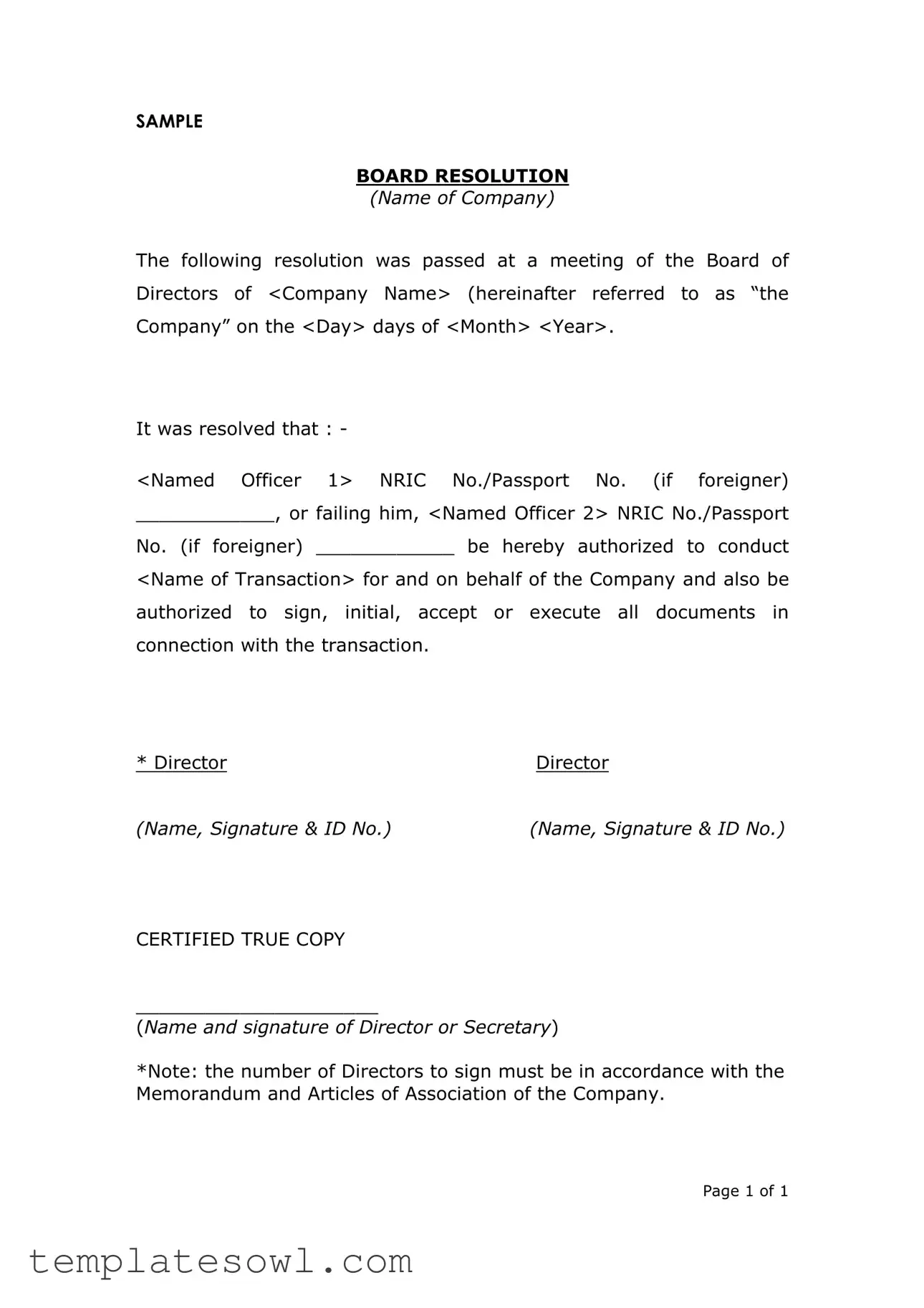What is a Board Resolution form, and why is it important?
A Board Resolution form is a document used by a company's Board of Directors to formally record decisions made during a board meeting. It serves to outline the specifics of the decisions, including details about any individuals authorized to act on behalf of the company. This document is important because it provides legal evidence that specific actions or transactions were approved by the board. Such resolutions are often necessary for operations like opening a bank account, entering into contracts, or other significant corporate actions.
Who typically signs the Board Resolution?
The Board Resolution must be signed by the directors who are authorized to execute such documents, as specified in the company’s Memorandum and Articles of Association. Generally, the form requires signatures from two directors, although this can vary based on the company's governing documents. It’s crucial to ensure that the correct number of signatures is obtained to maintain compliance and integrity in the process.
What information needs to be detailed in a Board Resolution form?
In filling out a Board Resolution form, several key pieces of information must be included. Firstly, the precise name of the company should be stated, along with the date of the board meeting. Secondly, the names and identification details (like NRIC or Passport numbers) of the officers authorized to act must be clearly indicated. Finally, a description of the transaction or action authorized is necessary. This level of detail ensures clarity and minimizes potential misunderstandings in the future.
How long is a Board Resolution valid, and how often does it need to be updated?
A Board Resolution remains valid until the action it authorizes is completed or until a subsequent resolution supersedes it. There is no set timeframe for how often a resolution must be updated; however, changes in personnel, company structure, or operational practices can necessitate the drafting of new resolutions. Keeping these documents current is vital for maintaining proper governance and ensuring that the company operates within its legal framework.
Can a Board Resolution be amended after it has been approved?
Yes, a Board Resolution can be amended after approval, but this requires a new resolution to formally rescind the previous one or to alter its terms. The amending process typically involves convening another board meeting where the proposed changes are discussed and voted on. Keeping accurate records of both the original and amended resolutions is essential to maintain transparency and proper documentation.
